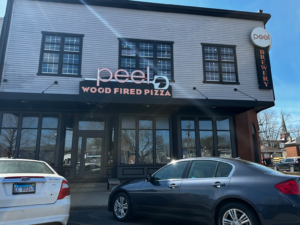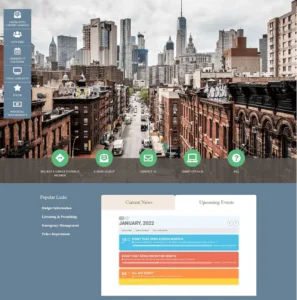What is a Municipal Website? A Comprehensive Guide for Local Government Digital Engagement
In the digital age, municipal websites have become essential tools for local governments to connect with residents, provide services, and improve civic engagement. These websites serve as the digital front door for municipalities, offering a central hub where citizens can access essential information, communicate with officials, and participate in community life. But what exactly is a municipal website, and what makes it a vital part of modern governance?
Understanding the Purpose of a Municipal Website
A municipal website is an official website for a city, town, county, or other local government entity, designed to provide public access to local government information, services, and resources. It offers a platform for residents to engage with their community, stay informed about local events, and participate in the decision-making process. For the municipality, it streamlines communication, boosts transparency, and enhances the delivery of public services.
Key Features of an Effective Municipal Website
To fulfill its purpose effectively, a municipal website should be user-friendly, responsive, and well-organized. Here are some key features that residents and officials alike expect from a well-designed municipal website:
1. User-Centric Navigation
- Intuitive Menus: Easy-to-navigate menus organized by categories like “Residents,” “Businesses,” and “Visitors” help users quickly find relevant information.
- Search Functionality: An optimized search bar allows users to locate specific information, whether it’s a recent ordinance, utility bill details, or public meeting schedules.
- Multilingual Options: Municipalities often serve diverse populations, so multilingual support ensures that non-native speakers can access important information.
2. Public Service Access
- Online Payments and Forms: Offering digital options for paying bills, taxes, and fines or submitting permits and applications makes the site a valuable utility.
- 24/7 Availability: With online services, residents can access essential services and information outside of traditional office hours, providing convenience and enhancing service accessibility.
3. News and Announcements
- Local Updates: Municipal websites serve as reliable sources for updates on everything from road closures to emergency alerts, helping citizens stay informed about current events.
- Event Calendars: A dedicated events section or calendar enables community members to learn about upcoming meetings, local celebrations, and other civic engagements.
4. Emergency Information
- Alert Notifications: Timely updates on emergencies, such as natural disasters or public health advisories, can be life-saving.
- Emergency Contacts and Resources: Contact information for emergency services, shelters, and first responders is essential for resident safety.
5. Public Participation Tools
- Forms for Feedback: Allowing residents to provide feedback on proposed projects or issues empowers the community to have a voice in governance.
- Virtual Town Halls and Polls: Digital engagement tools like online surveys or live-streamed meetings encourage public participation and increase transparency.
6. Business and Economic Development Information
- Local Business Resources: By providing resources for business licenses, permits, and local economic data, municipal websites support business owners and attract new investments.
- Directory of Local Services: A directory or listings for local businesses, real estate, and tourism attractions support economic growth and encourage residents to buy local.
Why a Municipal Website is Essential for Local Government
In addition to enhancing resident engagement, municipal websites offer several key benefits to local governments:
1. Transparency and Accountability
- Municipal websites play a crucial role in fostering transparency by providing access to public records, meeting minutes, budget reports, and other documents. By making this information readily accessible, municipalities build trust with residents and ensure accountability.
2. Cost-Effective Communication
- Websites reduce the need for paper mailers and printed materials, saving costs while providing real-time updates. Additionally, municipalities can instantly publish announcements online, reaching more people at a lower cost than traditional methods.
3. Efficient Service Delivery
- Municipal websites reduce administrative burden by allowing residents to complete transactions online. Services such as digital forms, applications, and utility payments streamline workflows, reduce wait times, and free up staff for other tasks.
4. Data Collection and Analysis
- Digital forms and online interactions allow municipalities to gather data on citizen concerns, service usage, and overall website traffic. This information can be used to enhance the efficiency of public services and inform future decisions.
How to Build a User-Friendly Municipal Website
A municipal website should be designed with both functionality and accessibility in mind. Here are some tips for creating a website that effectively meets the needs of the community:
1. Focus on Accessibility
- Ensure that the site meets ADA (Americans with Disabilities Act) guidelines so that people with disabilities can use it. This includes features like screen reader compatibility, high-contrast text, and closed captions for video content.
2. Mobile Optimization
- Many residents access websites from mobile devices, so a responsive design is essential for an effective municipal website. Mobile-friendly layouts, quick-loading pages, and simple navigation contribute to a better user experience on smartphones and tablets.
3. SEO Optimization
- A well-optimized website ensures that residents can find information quickly via search engines. Municipal sites should use keywords, metadata, and structured content to improve search engine ranking and help users find content more easily.
4. Engaging Content
- Beyond functional information, municipalities should publish engaging content such as community stories, local history, and “Did You Know?” sections that help residents feel connected to their community.
Trends in Municipal Website Development
As technology advances, new trends and tools are transforming municipal websites into highly interactive and personalized platforms:
1. Chatbots and AI Support
- Many municipal websites are beginning to use chatbots and AI-driven tools to provide immediate answers to common questions, such as “How do I pay my utility bill?” This saves time for both residents and staff.
2. Integrated 311 Services
- 311 services, which allow residents to report non-emergency issues like potholes or graffiti, are increasingly being integrated directly into municipal websites. This feature allows citizens to easily report and track the resolution of these issues.
3. Social Media Integration
- Municipal websites can now sync with social media channels, automatically posting updates on multiple platforms to ensure a wide reach. This makes it easy to keep residents informed and engaged across digital channels.
4. Geolocation and Personalization
- Geolocation technology enables websites to deliver personalized information based on a user’s location within the municipality, such as trash pickup schedules, nearby events, or election polling locations.
Conclusion
A municipal website is much more than a digital placeholder—it’s an essential tool for local government communication, service delivery, and civic engagement. By prioritizing user-centered design, accessibility, and efficient service options, municipal websites can build a stronger, more connected community. As technology continues to evolve, municipal websites will likely become even more personalized, interactive, and integrated into the daily lives of residents.
For local governments, investing in a robust, user-friendly website is a step toward fostering transparency, improving service delivery, and strengthening public trust. In a world where digital communication is increasingly central to governance, a well-designed municipal website stands as a critical component of modern, effective local government.







